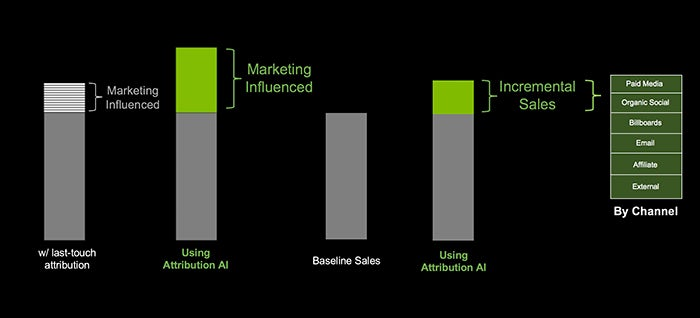How NVIDIA Uses AI to Boost Digital Marketing Efficiency

NVIDIA’s graphics processing units (GPUs) deliver the computing capability necessary to power everything from graphics-intensive games to self-driving cars and AI development work. In recent years, this leader in AI has looked to AI-driven tools to serve its own customers as well.
This includes NVIDIA’s marketing organization, which turned to Adobe’s Customer Experience Management (CXM) solutions that use AI to assess the effectiveness of campaigns and better anticipate customer behaviors. Driven by data analysis, the approach supports business resiliency through enhancing customer experiences, driving greater efficiencies online and aligning the impact of marketing on sales.
When Adobe launched a beta program for AI-driven Intelligent Services to address these kinds of needs, NVIDIA’s data-driven team was one of the first to sign up. In fact, we’ve been working together on AI for a while, and separately have more to share on our work together today with NVIDIA’s Spark 3.0 news. Here, we’re sharing some early results of how AI is helping NVIDIA enhance the customer experience.
AI-driven marketing attribution
Most marketing teams have one underlying challenge in common: proving the effectiveness of marketing channels and campaigns. The issue has been exacerbated in the last couple of years, as brands began to invest in everything from email marketing and websites, to social media and emerging channels like voice-enabled AI.
In a recent example, NVIDIA wanted to understand how marketing impacted the sales of a new line of GPUs. With Attribution AI (part of Adobe’s Intelligent Services), the system ran an in-depth analysis across all relevant data sets and identified channels (paid media vs email) and campaigns (bundled offers vs product refresh) that proved to be most effective. Incredibly, it helped them tie marketing closer to sales by pointing out incremental lift and quantifying the sales (or conversion) that would be missed without marketing.

Attribution AI also enabled NVIDIA to move beyond existing forms of attribution, where oftentimes too much credit is given to the “last-touch,”—the final engagement point before an actual purchase or conversion event happens. In traditional rules-based models, different touch points in the customer journey are often misrepresented and undervalued or overvalued as a result.
Recently, the marketing team was tasked with driving event registrations. They wanted to ensure that funds were being spent wisely and had the biggest impact. With Attribution AI, they were able to see the effectiveness of investments across channels, while drilling down into specific campaigns. In this case, they optimized paid search around a set of keywords—an effort that drove a 5X lift in paid registrations.
Predicting customer behaviors with AI
In today’s competitive business environment, reducing churn has become the new growth driver for many companies. Brands need an ability to anticipate customers that may jump ship and look for ways to re-engage and retain them. NVIDIA leveraged Customer AI in its consumer business to better identify those who were likely to stop using the service. With a remarkable 96% accuracy rate, the service analyzed everything from the number of days spent between sessions to usage frequency. AI was able to provide a segment of customers who would be best served through specially tailored content and campaigns.
According to Derek Sun, digital marketing analyst at NVIDIA: “AI and machine learning have a big role to play in the future of marketing, as businesses want to better understand their customers and make operations more efficient. Adobe’s Intelligent Services provide mature data science models that are both flexible and fast to deploy, helping us be more in tune with our communities and deliver the right content to the right person at the right time, while improving the efficiency of our marketing investments.”
NVIDIA is a great example for brands and marketers in any industry that are exploring ways in which AI/ML can help their organization and drive leadership in CXM. Across all the communities NVIDIA serves, from gamers, artists/designers, researchers, data scientists, and innovators across all industries, the company is showing how data and AI can help ensure that every decision around customer engagement and marketing investment is the most impactful, most cost-effective choice possible.
To learn more about Adobe’s Intelligent Services and how they can help your organization see quicker value from AI, visit here.